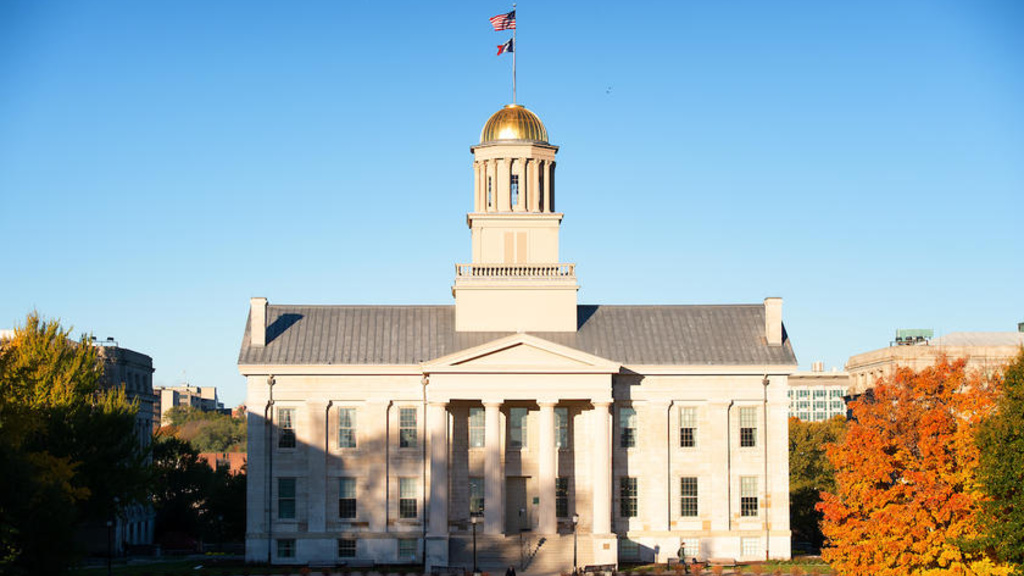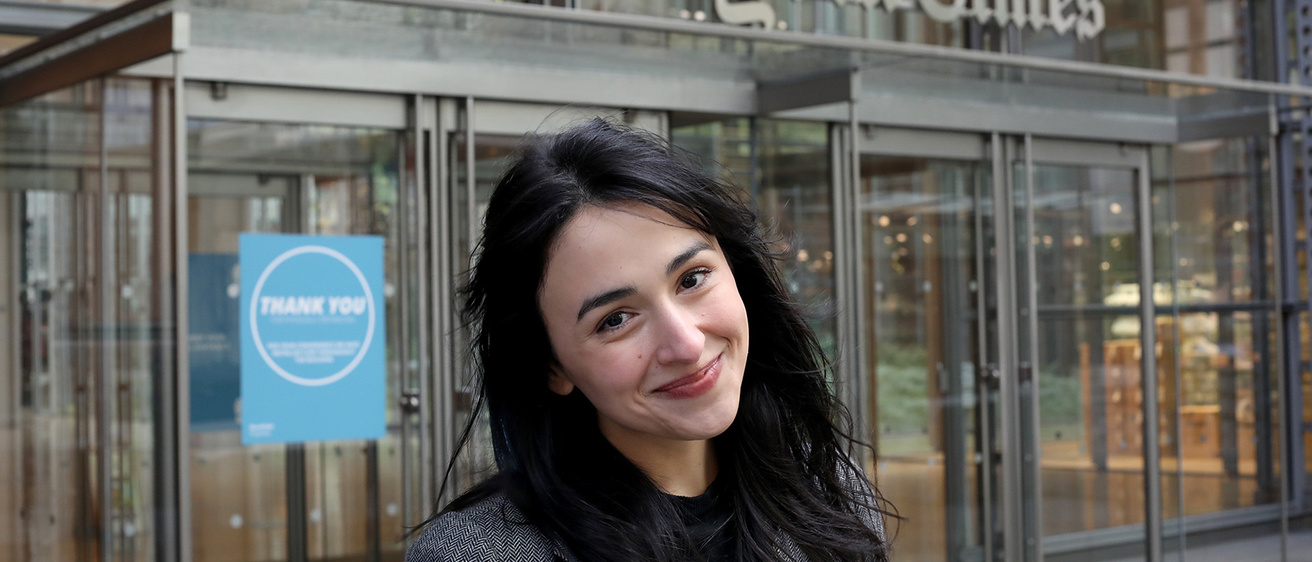As a software engineer at The New York Times, computer science graduate Asmaa Elkeurti uses technology to help readers better understand the historic 2020 election.
Story: Tom Snee
Photography: Shane Johnson
Published: Dec. 8, 2020
Asmaa Elkeurti started as a journalism major at Iowa, but coding and data eventually grabbed her attention and she graduated in 2016 with a Bachelor of Science degree in computer science.
She eventually combined the two interests and joined The New York Times as part of its election reporting team just in time to help cover the historic 2020 election.
Elkeurti works as a software engineer, using technology as a storytelling tool to design web pages that help Times’ readers better understand the news. She helped build the infrastructure that powers the organization’s elections homepage, individual state election pages, historical results, and the overall map and 2020 results tables.
She started working at the Times in May after she and her husband moved to New York City in March, just as the city was going into pandemic lockdown and they had to spend months in their Roosevelt Island apartment. “We got 10 days of exploration in before we were quarantined,” she says.
Elkeurti came to Iowa expecting to prepare for a career as a photojournalist. She’d been a longtime member of the student newspaper staff at Kennedy High School in her hometown of Cedar Rapids, Iowa, and she wanted to work at The Daily Iowan, one of the best college newspapers in the country. She was awarded a prestigious Daily Iowan Scholarship and spent her first year on staff covering arts; Iowa City municipal government; the Board of Regents, State of Iowa; and participating in the monthly Q&A interview with President Sally Mason.
But her experiences at Iowa also introduced her to science and public policy, which then led her to coding and technology. She changed her major from journalism and eventually graduated with a computer science degree.
Still, she says her abbreviated journalism education served her well. Covering Iowa City government and the Board of Regents for the DI showed her all about government operations, from tax policy to zoning codes. The experience also helped get the job at the Times, where her understanding of journalism makes her a good fit in the newsroom. The basic tenet of journalism, to concisely and clearly communicate a story, helps her work with the design desk to build better tools that aid readers’ understanding.

Join the Hawkeye family!
Iowa will prepare you, challenge you, and change you. You will change the world. We accept applications year-round.
“I know what a lede is, and a nut graf,” she says. “I know how a newsroom operates and I know our expectations are to make information clear and readable.”
Elkeurti credits Denise Szecsei with her interest in computer science. Szecsei, associate professor of instruction in computer science in the College of Liberal Arts and Sciences (CLAS), taught the first computer science class that Elkeurti took and she was immediately hooked. Elkeurti would later work as one of Szecsei’s teaching assistants.
“What set me up to succeed was learning algorithmic thinking, designing a problem down to its smallest part and coming up with a solution for it,” she says.
“I don’t know if things would have worked out like this if I hadn’t had my experiences both in and out of the classroom at Iowa.”
Getting involved in other organizations also helped build her network and taught her organizational and leadership skills. She was vice president of the Association of Computer Machinery’s Iowa chapter. And, fully cognizant of the still-small number of women working in computer science, she helped to revive Women in Informatics & Computer Science (now known as Women in Computing Sciences), a student group that connects and supports women computer science majors.
“The group makes women in the department aware of other women computer science majors, which can be hard because there’s so few of us,” she says.
Her involvement also made connections to Iowa City’s growing technology and innovation community, which led to her first job at Pear Deck, an Iowa City-based developer of educational software. She worked there for four years before moving to New York.
In the end, she says she’s grateful that Iowa provided her with the journalism and computer science background experience that prepared her for a job that’s not the usual kind of work in either field.
“I don’t know if things would have worked out like this if I hadn’t had my experiences both in and out of the classroom at Iowa,” she says.
